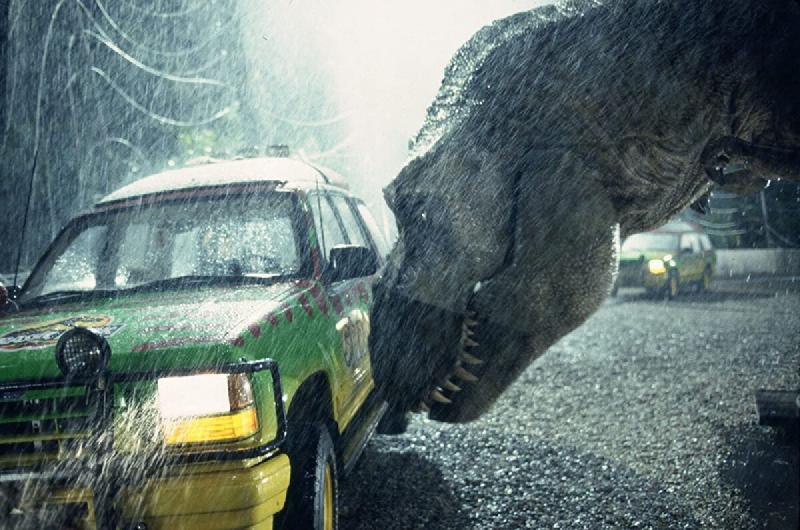You may want to watch the film first and think about:
- Are there situations where you would want to bring back an extinct species?
What the film did well
Inspired interest in palaeontology - Snippets of palaeontological questions scattered through the movie. Depiction of field work.
Depiction of dinosaurs - Still inspires awe and wonder, even though our understanding of how dinosaurs looked has moved on since the film was first made. Dinosaurs are shown, more or less, as animals rather than monsters.
Moral/ethical discussions about use of scientific knowledge - Discussions between the characters in the film echo real discussions about cloning extinct animals, geoengineering, genetic modification of organisms to solve human problems. Balances the wonder and power of the scientists’ achievements with the possible consequences.
Bringing back the wooly mammoth
- Scientists Could Resurrect the Woolly Mammoth - National Geographic
- Can We Bring Back Mammoths From Extinction? Probably Not - Discover magazine
Genetic modification of mosquitoes to control disease
- Can genetically modified mosquitoes wipe out malaria? - How Stuff Works
- Self-destructing mosquitoes and sterilized rodents: the promise of gene drive - Nature
Gender roles
Dr Ellie Sattler is an active, intelligent, and professional female character. Dr Alan Grant spends most of the film as a caregiver for two children. In both cases the roles the characters take are generally depicted in a straightforward way, without much comment or judgement of their femininity or masculinity.
What the film could have been done better
Highlight the limitations of palaeontology - More explicit discussion of the interpretive nature of palaeontology and how much of a change the ability to observe live specimens would be.
Tackle questions around living conditions for captive animals - Animals kept in poor conditions do not thrive and can become aggressive. How much of the raptors’ behaviour was due to being kept in a small paddock for a prolonged period? This is an issue addressed in some of the sequels.
Recommendations for supporting those interested in palaeontology
When Sue Found Sue (2019) - picture book about palaeontologist, Sue Hendrickson, and how she found the most complete and largest T. Rex specimens ever found. Now at the Field museum in Chicago.
If you are more into stories and history try books like:
-
The Gilded Dinosaur (2000) - or any other book in the Bone Wars, the fierce rivalry between Charles Marsh and Edward Cope.
-
The Dinosaur Hunters (2010) - Story of the 19th century scientists and the description of the first dinosaur hunters.
Go fossil hunting!
Check regulations in your area. Some types of fossil
or locations may be protected by law. Significant finds should be turned into
your local palaeontological museum or university department.
- https://ukfossils.co.uk/ - Lists good fossil hunting sites and upcoming group fossil hunts.
- https://maps.roadtrippers.com/trips/20150022 - List of some fossil hunting sites in America
Play with toys!
Sort into groups. Arrange into scenes.
Volunteer
Look for opportunities at museums, nature reserves, or
anywhere else. Builds experience and makes contacts with people in the field
you are interested in.
Get involved in citizen science projects
https://www.inaturalist.org/ - US based app for sharing your natural history observations.
https://www.brc.ac.uk/irecord/ - UK based platform for the public to record their natural history sightings. Records are verified by experts and feed into official wildlife monitoring schemes.
https://www.myfossil.org/resources/citizen-science/ - Fossil citizen science project run out of the Florida Museum of Natural History
Questions or comments? Get in touch.

